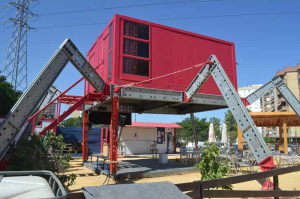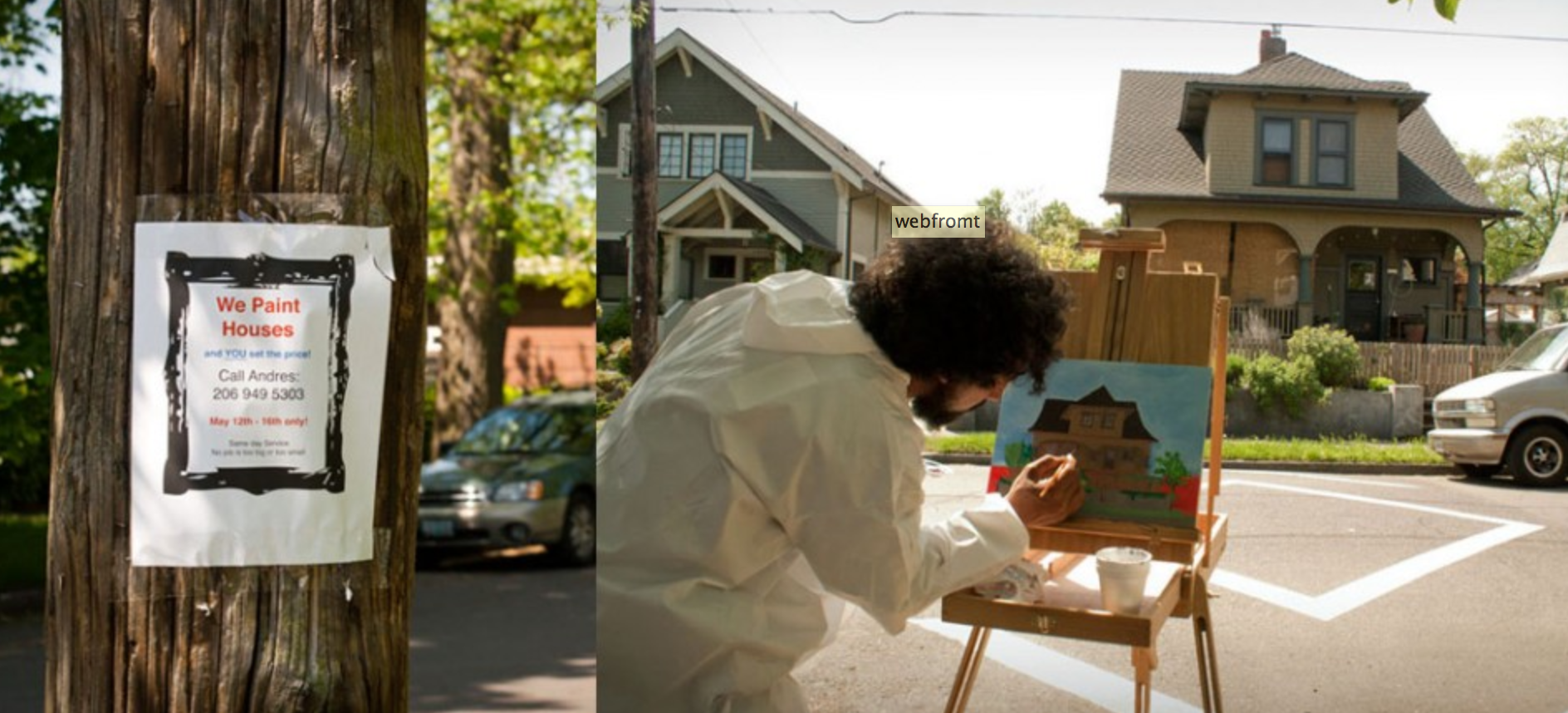
“I Wish This Was” is a project conducted by Taiwanese-American artist Candy Chang to invite public discourse into urban planning, especially concerning abandoned or unoccupied spaces. Stickers reading “I WISH THIS WAS” are posted onto the facade of buildings or fences with blank space for passersby to write in their own desires for the use of the space.
More here.
Banksy is a publicly popular and well-known street artists. For this performance/installation, the artist made a painting that looks like that belongs to an art museum and installed it a the Metropolitan Museum of Art. Read more.

“Spiders” is a project that melds building prostheses with unoccupied urban lots, presenting a different functional use for the same tools used to construct permanent urban structures.
More here.

Adrian Kondratowicz was able to create an ultimate collaborative public art by simply distributing pink polka dot trash bags to his Harlem neighborhood. Read more.

In this public installation, Gonzalez-Torres uses the billboard format to provoke a public dialogue about the AIDS epidemic. The billboard features a photograph of an empty bed. Although the work has enormous personal significance (it was prompted by the death of Gonzalez-Torres’ longtime partner), it is difficult to see how a public unfamiliar with the artist could connect it to AIDS.
More here…

Felipe Castelblanco is a Columbian artist based in Pittsburgh, PA. For “We Paint Houses” project, the artist put up street advertisement-“We paint houses, and you set the price!” The people who called the number got a painting of their houses that was done by laborers, instead of painting the walls of the houses. Read more.

Fulguration means “a flash like that of lightning”, and Bismarck’s “Image Fulgurator” closely fits that description. The device operates via a “reactive flash projection”, that is, it projects an image on an object at the exact moment that a photograph is taken. In effect, it is a means of manipulating the photographs without the knowledge or consent of the photographer. Unlike conventional image manipulation, “Image Fulgurator” physically alters scenes, which makes it an attractive instrument for détournement.
More here…

Disclaimer: Satterwhite doesn’t include much information about this project on his website. I attended a lecture he gave at Bard college, and this is from memory.
“Model It” is a performance in which Satterwhite dances in front of various storefronts to songs that his mother wrote. His performance is extraverted and swanky – a puzzling counterpoint to his mother’s incoherent, rambling music. It is an intensely personal work, emblematic of an ongoing creative dialogue between Satterwhite and his mother.
More here…

“Time/bank” is a currency created by the founders of the e-flux journal, Julieta Aranda and Anton Vidokle. Drawing influence from existing time banks, “Time/bank” proposes time as a unit of economic exchange, by way of “Hour Notes” (one is shown above). Interestingly, 2009 also saw the introduction of the Bitcoin, the open source cryptocurrency. Since Time/bank relies on fixed measures of time, it is both straightforward and stable, in opposition to today’s opaque and volatile cryptocurrencies.
More here…

“Occupy the Cloud” takes the form of three banners in front of a brutalist office building in central London. On each banner is a symbol, from left to right: the lightning bolt of the international squatters’ movement, the @ symbol (acquired by MoMA in 2010) and the Cloud symbol. The banal corporate aesthetic of the banners belies the polemical tone of the three symbols read sequentially. Taken together, they suggest that the Cloud is a prime site for political intervention. The installation is timely and ominous in the wake of the 2013 NSA revelations.
More here…








